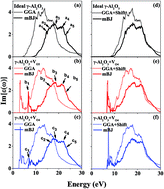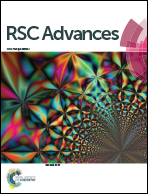Optical properties of ideal γ-Al2O3 and with oxygen point defects: an ab initio study
Abstract
The optical properties of pure γ-Al2O3 and in the presence of oxygen point defects are investigated by the density functional theory approach using the PBE-GGA and TB-mBJ-GGA schemes. The optical properties of the modeled imperfect crystal show closer agreement with the experimental results than the ideal crystal. The defects produce extra sharp bands and sub-bands, in the bandgap region. The TB-mBJ scheme provides better descriptions of the bandgaps and positions of the sub-bands compared to the experiments than the PBE-GGA scheme. The imaginary part of the dielectric function reveals that the sub-bands produced by the oxygen point defects act as trapping centers. The real part of the dielectric function and the index of refraction are also strongly affected by these defects and increase at 0 eV, decrease at 5 eV and remain constant at 80 eV with the defects. The intensities of the optical spectra are calculated by PBE-GGA to be higher than those of TB-mBJ. The higher intensities are mainly ascribed to the matrix elements of the linear momentum operator.


 Please wait while we load your content...
Please wait while we load your content...